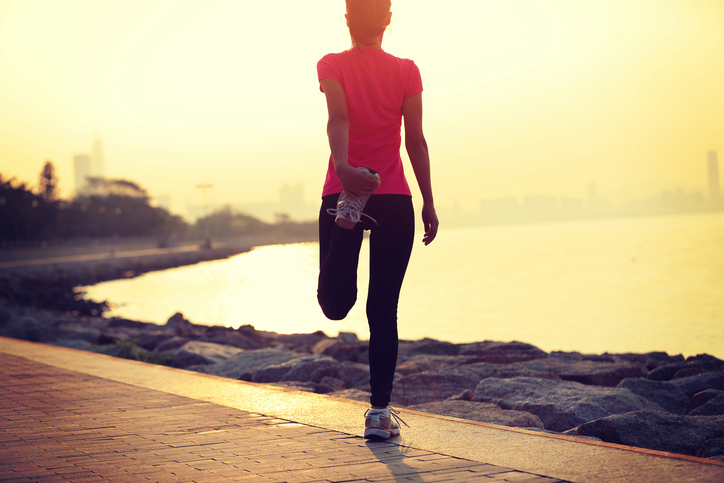Stretching can be confusing. One minute experts tell you to stretch before you run, and the next minute research reveals that static stretching (think: touching your toes) may actually zap performance. What’s a runner to do?
Well, first, know this. You need to stretch. Running makes your legs strong, toned, and, unfortunately, tight. Every step you take forces those quads, hamstrings, calves, and hips to flex and extend over and over to propel you down the road. After many miles, those hardworking muscles and tendons can develop imbalances, scar tissue, and tension, slowing you down and paving the way for common overuse injuries like IT Band syndrome, and Achilles tendonitis.
There are two types of stretches: dynamic and static. Dynamic stretches should be performed before you pound the pavement, and static stretches are great for after your run, when your muscles are pliable.
Dynamic—that’s in motion—and static stretching is an essential part of any runner’s training program. Dynamic stretches activate and loosen up your leg muscles, preparing you for your run. Static stretching at the end of your run can lower your heart rate, cut your risk of injury and decrease muscle soreness.
Stay loose with this stretching plan:
Pre-Run
Both these dynamic stretches loosen up and activate all your leg muscles—inner and outer thighs, hips, hamstrings, calves and quadriceps—through full range of motion.
Leg swings
Hold onto a sturdy object, stand on one leg and swing the other leg forward and back. Do 20. Then swing that same leg side to side 20 times. Each swing should build until your leg is close to its full range of motion.
Walking lunges
Take a large step forward with your right leg, and bend the knee until your thigh is parallel to the floor and knee is aligned with your ankle. Push back upward, draw your left foot even with your right and step forward with the left. Try to keep your walking lunges fluid, and focus on proper form. Do 20 (10 per leg).
Post-Run
The following stretches target the major leg muscles to maintain healthy flexibility and range of motion. Hold all stretches for 30 seconds to two minutes.
Kneeling hip flexor and hamstring
From a kneeling position, plant the right foot on the ground in front of you, so the leg is bent 90 degrees, with the knee and ankle aligned. Keeping your back straight, press forward into your right hip while keeping your left knee pressed into the ground, stretching your left hip and right hamstring. To increase the stretch to the left hip flexors, squeeze and contract the glute muscles of your left hip.
Standing quad
Stand with legs together. Bend your left leg, bringing your heel toward your butt, and grasp your left foot with your left hand. Press your shoelaces into your hand, so that your leg does the stretching instead of pulling up with your hand.
Standing calf
Stand facing a wall with your hands on the wall at about chest level. Placing the ball of your right foot up against the wall, heel touching the floor, gently lean into the wall until you feel a stretch in your calf while keeping your leg straight.

